For any music to be created, one needs to have some semblance of music instruments. In the Natyashastra musical instruments have been divided into four main categories on the basis of how sound is produced.
- The Tata Vadya or Chordophones- Stringed instruments
- The Sushira Vadya or Aerophones- Wind instruments
- The Avanaddha Vadya or Membranophones-Percussion instruments
- The Ghana Vadya or Idiophones – Solid instruments which do not require tuning.
Tata Vadya
- These are the chordophones or the string instruments that function best when their sound is modified by hand. Stringed Instruments are of three varieties:
- (a) Bowed: The instruments where the sound is produced by drawing a bow across the strings. For example, Sarangi, Violin, etc.
- (b) Plectral: The instruments where strings are plucked by the fingers or by a plectrum of wire or horn. For example, Veena, Sitar, etc.
- (c) The instruments that are struck by a small hammer or pair of sticks. For example, Gotuvadyam and Swarmandal.
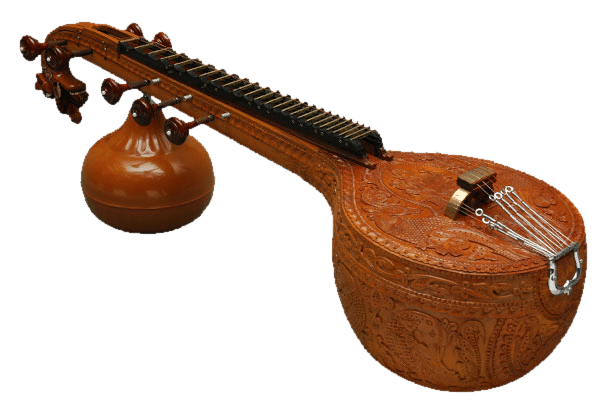
Sushira Vadya
- All wind instruments belong to this class. Aerophones are also known as Sushira Vadya. Most common Sushira Vadya instruments are Bansuri (Flutes), Nadaswaram (Nagaswara), Shehnai, Pungi, Sumai, Mohuri, Kama etc.
- The bamboo flute is one of the oldest Indian musical instruments. The flute in its many forms has been in use in India since the Vedic period.
- Harmonium is a wind instrument employed widely as an accompaniment to classical, light-classical and devotional singing in Hindustani music.
- Shehnai is a double reeded wind instrument with a widening tube towards the lower end. It is considered auspicious and is played on all festive occasions in India.
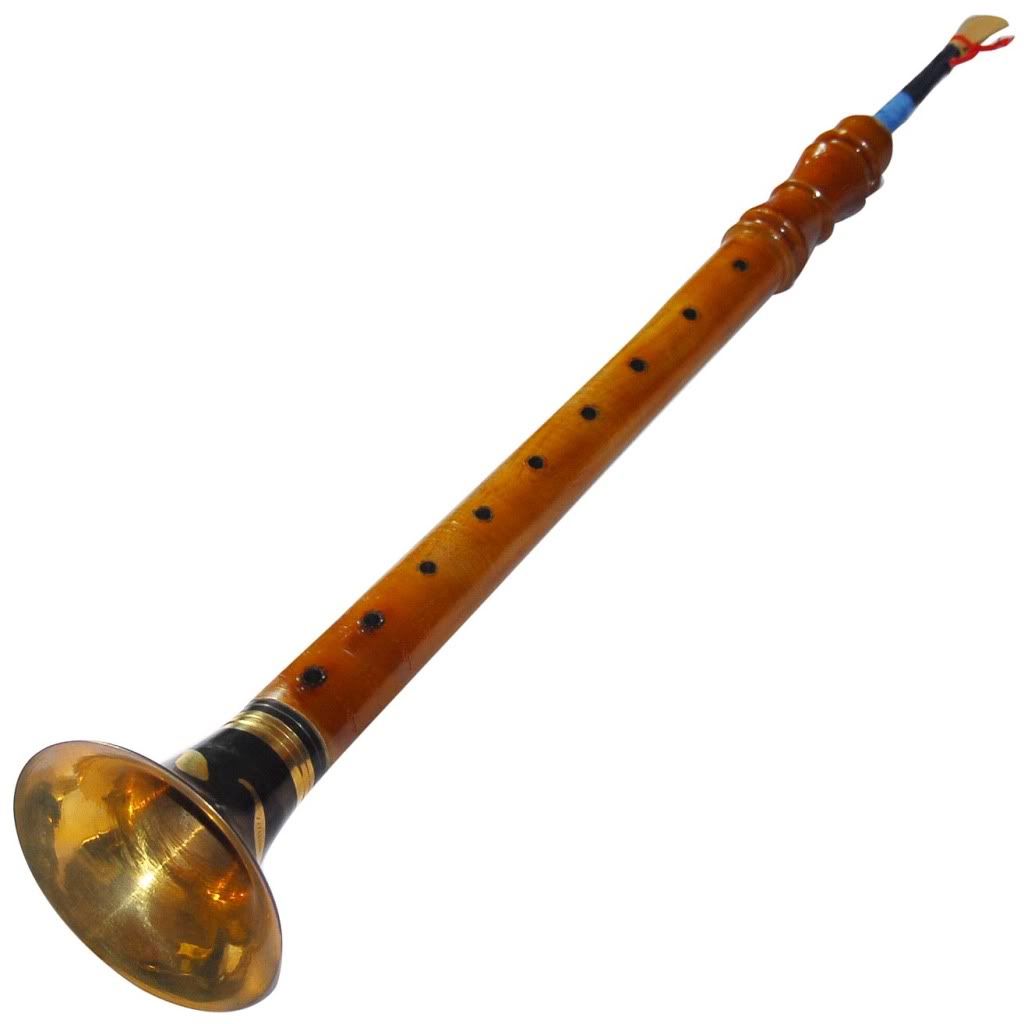
Awanad/Avanaddha Vadya (Percussion Instruments)
- These are the membranophone instruments as they contain an outer membrane, which is beaten to take out particular musical sounds. These are also known as percussion instruments as one has to strike them to generate musical sound.
- They generally have one or two faces covered with hide or skin. The most ancient amongst this class are the Bhumi Dundubhi or the earth drum.
- Generally, the musical instruments included in this category are Tabla, Drum, Fhol, Congo, Mridangam, etc. While the Tabla is usually the accompaniment of most Hindustani classical vocals, the Mridangam is the instrument that accompanies the Carnatic music performances.
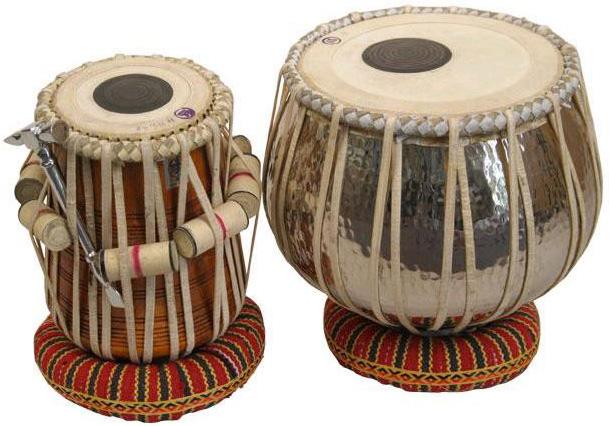
Ghana Vadya (Idiophones)
- Idiophones or Ghana Vadya are solid instruments which do not need any further tuning. Manjira, Jaltarang, Kanchtarang, Kasht-tarang, Khartal, Piccolo, Tic-Toc, Tong, Tasha, Kartal, Stirdrum, Kabbas, Moracus, Talam, Agogo, and Chimta are some of the Ghana Vadyas.
- Manjira is a small brass cymbal that is generally used in temple prayers. Manjiras are being used in the religious music in temples for a long time. There is evidence of the use of Manjiras even during the Indus Valley Civilization from the excavations in the Indus Valley site. They are struck at regular intervals depending on the laya of the musical piece. A variety of effects can be achieved by striking different parts of the Manjira together.
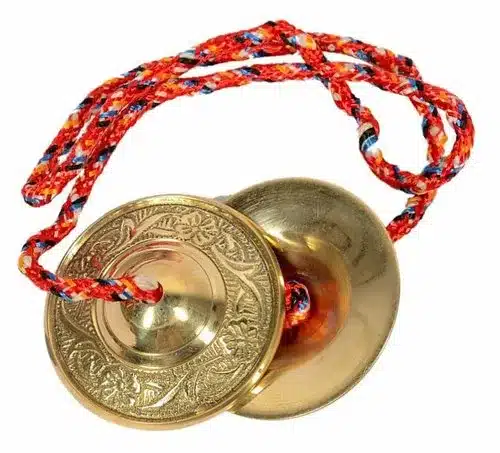
Santoor
- It is a 100 strings instrument and is a traditional instrument of Jammu and Kashmir from ancient times. Sufiana kalam music is accompanied by Santoor.
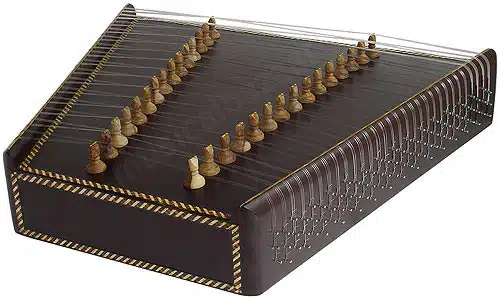
Folk Musical Instruments
Chordophones
- Tumbi: It is played during Bhangra in Punjab.
- Ektara or Tun Tuna: It is a one-stringed instrument played by wandering monks.
- Dotara: two-stringed instrument used by Bauls
- Chikara: bowed instrument used in Rajasthan, Uttar Pradesh and Madhya Pradesh.
- Dilruba or Esraj: accompanying instrument used in Punjab and during Rabindra sangeet in Eastern India.
- Onavillu: From Kerala and is made of bamboo.
- Sarinda: Important tribal instrument and is used by Santhals in Eastern India and also used in Rajasthan and Assam. It is like Sarangi.
Aerophones
- Pungi or Been: It is used by snake charmers. It is made up of dried bottle gourd and two bamboo sticks.
- Algoza: It is a double flute and is a popular folk instrument of North West India, especially Punjab.
- Tangmuri: It is a folk instrument of Khasi hill people of Meghalaya.
- Titti: It is like a bagpiper, made of goat skin. It is made in South India especially Kerala and Andhra Pradesh.
- Mashak: An important folk instrument of Garhwal region in Uttarakhand, Rajasthan and Uttar Pradesh.
- Gogona: It is made up of bamboo, used in Bihu festival in Assam.
Membranophones
- Ghumot: It is like a drum and is played during Ganesh festival in Goa.
- Idakka: It is like Damru and is from Kerala.
- Udukai: It is a hour-glass shaped instrument like damru from Tamil Nadu.
- Sambal: It is like drum. It is played with sticks in Konkan region of Maharashtra.
- Tamak: It is an important instrument of Santhal tribe and is a two headed drum. It is beaten with drum sticks.
- Diggi: It is a folk drum from Ghariya village of Uttar Pradesh.
Idiophones
- Chimta: evolved from fire tongs, used in Punjab.
- Gharha: These are earthern pots, used in folk music of Punjab
- Andelu: It is used in Burra-Katha. It is a pair of hollow metal rings.
